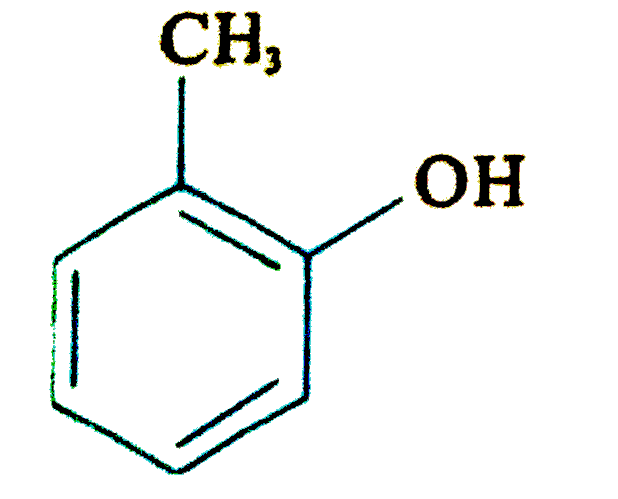Which of the following is ortho-para directing group
CF3
CCl3
−CH=CH−COOH
−N≡C
The correct Answer is:C
To determine which of the given groups is ortho-para directing, we need to analyze the electron-donating or withdrawing nature of each group. Here’s a step-by-step breakdown of the reasoning:
Step 1: Identify the Groups
We have four groups to analyze:
1. CF3 (Trifluoromethyl)
2. CCl3 (Trichloromethyl)
3. CH=CH-COOH (Acrylic acid)
4. N(CH3)3 (Trimethylamine)
Step 2: Analyze CF3
- Nature: CF3 is a strong electron-withdrawing group due to the electronegativity of fluorine atoms.
- Effect: It decreases electron density on the aromatic ring, making it meta-directing.
- Conclusion: CF3 is not ortho-para directing.
Step 3: Analyze CCl3
- Nature: CCl3 is also an electron-withdrawing group, similar to CF3.
- Effect: It reduces electron density on the ortho and para positions, leading to meta-directing behavior.
- Conclusion: CCl3 is not ortho-para directing.
Step 4: Analyze CH=CH-COOH
- Nature: The double bond (C=C) and the carboxylic acid (COOH) can stabilize positive charges through resonance.
- Effect: When an electrophile attacks the ortho or para positions, the positive charge can be stabilized by resonance with the double bond and the carboxylic acid group.
- Conclusion: CH=CH-COOH is ortho-para directing.
Step 5: Analyze N(CH3)3
- Nature: N(CH3)3 is a nitrogen atom with sp³ hybridization, which has a high s-character and is more electronegative.
- Effect: It withdraws electron density from the aromatic ring, making it meta-directing.
- Conclusion: N(CH3)3 is not ortho-para directing.
Final Conclusion
The only group that is ortho-para directing among the options is CH=CH-COOH.
---
We have four groups to analyze:
1. CF3 (Trifluoromethyl)
2. CCl3 (Trichloromethyl)
3. CH=CH-COOH (Acrylic acid)
4. N(CH3)3 (Trimethylamine)
- Nature: CF3 is a strong electron-withdrawing group due to the electronegativity of fluorine atoms.
- Effect: It decreases electron density on the aromatic ring, making it meta-directing.
- Conclusion: CF3 is not ortho-para directing.
- Nature: CCl3 is also an electron-withdrawing group, similar to CF3.
- Effect: It reduces electron density on the ortho and para positions, leading to meta-directing behavior.
- Conclusion: CCl3 is not ortho-para directing.
- Nature: The double bond (C=C) and the carboxylic acid (COOH) can stabilize positive charges through resonance.
- Effect: When an electrophile attacks the ortho or para positions, the positive charge can be stabilized by resonance with the double bond and the carboxylic acid group.
- Conclusion: CH=CH-COOH is ortho-para directing.
- Nature: N(CH3)3 is a nitrogen atom with sp³ hybridization, which has a high s-character and is more electronegative.
- Effect: It withdraws electron density from the aromatic ring, making it meta-directing.
- Conclusion: N(CH3)3 is not ortho-para directing.
The only group that is ortho-para directing among the options is CH=CH-COOH.
Topper's Solved these Questions
- BOOK - MOTIONCHAPTER - AROMATIC COMPOUNDEXERCISE - Exercise - 317videos
AROMATIC COMPOUND
- BOOK - MOTIONCHAPTER - AROMATIC COMPOUNDEXERCISE - Exercise - 4 | Level-I13videos
AROMATIC COMPOUND
- BOOK - MOTIONCHAPTER - AROMATIC COMPOUNDEXERCISE - Exercise - 2 (Level-I)47videos
AROMATIC COMPOUND
- BOOK - MOTIONCHAPTER - ALKYI HALIDEEXERCISE - Exercise - 4 | Level-II8videos
ALKYI HALIDE
- BOOK - MOTIONCHAPTER - ATOMIC STRUCTURE EXERCISE - EXERCISE-4 (LEVEL-II)18videos
ATOMIC STRUCTURE
Similar Questions
Knowledge Check
- Question 1 - Select One
In the electrophilic substituion of benzene ring, the second substituent is directed by the group already present. Electron releasing groups (+I and +M) are ortho-para-directing and activating, whreas the electron withdrawing groups (-I and -M) are meta-directing and deactivating.
Halogens are placed under the category of +T (Tautomeric) groups because they have -Ibdyctuve abd +Mesomeric effect. These groups are deactivating but ortho-para-directing.
In the introduction of third group to the benzene ring, the product of minimum steric gindrance is formed.
Which of the following is not an ortho, para-directing group ?A−FB−NCC−OCH3D−CCI3 - Question 2 - Select One
The Common ortho and para directing group is
A−NH2B−COOHC−C≡NDNone of these - Question 3 - Select One
The Common ortho and para directing group is
A−ORB−CJOC−NO2DNone of these
Which of the following groups are ortho-end para-directing :
View SolutionWhich among the following is the strongest ortho-para directing group?
View SolutionWhich of the following group is sharp ortho and para directive ?
View SolutionA third group is least likely to enter between two groups in the mta relationship. This is the result of steric hindrance and increases in importance with the size of the groups on the ring and with the size of the attaching species. When a meta-directing group is meta to an ortho-para directing group, the incoming group primarily goes ortho to the meta directing group rather than para.
Q. Chlorination of m-chloro nitro benzene givesView SolutionA third group is least likely to enter between two groups in the mta relationship. This is the result of steric hindrance and increases in importance with the size of the groups on the ring and with the size of the attaching species. When a meta-directing group is meta to an ortho-para directing group, the incoming group primarily goes ortho to the meta directing group rather than para.
Q. View Solution
View Solution

